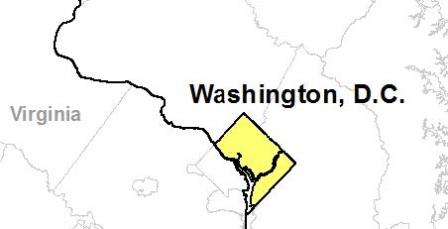Stories of Progress in Achieving Healthy Waters
U.S. EPA Region 3 Water Protection Division
Washington, D.C. • September 29, 2016
Specially-designed outdoor education areas surrounded by rain gardens and other green features have been added to the grounds of three District of Columbia schools, providing students with hands-on learning experiences while reducing stormwater pollution to local waters.
Two sources of EPA funds – a $500,000 Clean Water Act Title VI Grant and a $391,000 Chesapeake Bay Implementation Grant – financed the schoolyard improvements at the Ludlow-Taylor and J. O. Wilson elementary schools and the Excel Academy Public Charter School.
The green features were built in the summer of 2016 as part of the District Department of Energy and Environment’s (DOEE’s) RiverSmart Schools Exit program that to date has provided this benefit to 85 District schools.
Among the criteria to participate, schools must organize two to four community action days for the planning, preparation and installation of the site, have a schoolyard teaching team that meets at least four times a year, and incorporate the schoolyard garden into the existing curriculum. Teachers attend workshops on watershed ecology and other topics that allow them to work with their students outdoors.
At Ludlow-Taylor, rain gardens, a labyrinth built of infiltration planters, garden beds and outdoor education areas make up nearly 3,000 square feet of green space filled with plants and trees. The new features are located at a low point in the schoolyard and will capture and filter stormwater runoff from a surrounding 12,000 square foot area.
Students have an opportunity to learn about a variety of environmental issues, including reducing stormwater pollution from school grounds. While many lessons are hands-on, students at Ludlow-Taylor have class on a canopied platform for presentations, reflection and discussion. At J.O. Wilson and Excel, the teaching areas have rings of cut logs for seating, and a sail for shade.
Collectively, stormwater retention and wildlife habitat installed at all three schools include a total of 5,174 square feet of bioretention rain gardens, three 580-gallon rainwater harvesting cisterns, native plantings, a grove of canopy trees, shrubs and perennials, and the outdoor education areas.
The three sites are each designed to retain all stormwater from rain events of 1.7 inches or less, according to DOEE. Mature canopy trees will capture additional stormwater over time.

-
Class Outdoors in the District of Columbia (PDF)(1 pg, 642 K,
09/29/2016)
Specially-designed outdoor education areas surrounded by rain gardens and other green features have been added to the grounds of three District of Columbia schools, providing students with hands-on learning experiences while reducing stormwater pollution to local waters.
